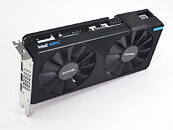
Intel Asks Xe-HPG Scavenger Hunt Winners to Accept a CPU In Lieu of Graphics Card
Remember that Xe-HPG Scavenger Hunt that Intel hosted last year? If you somehow missed it, Intel was maybe giving away some Arc graphics cards to 300 lucky winners. There were two different tiers of prizes, grand prize and first prize, which later ended up translating to an Arc A770 and an Arc A750 graphics card respectively. Now news via VideoCardz are suggesting that Intel is trying to get out of giving these 300 people their prize, well, at least the promised graphics card, in exchange for an Alder Lake CPU.
Intel has apparently sent out an email to the winners, asking them to accept an Intel Core i7-12700K if they were a grand prize winner or a Core i5-12600K if they were a first prize winner, instead of the promised graphics card. The winners have until Friday the 19th of August to decide if they want a CPU instead of a GPU, although Intel is apparently still allowing them to wait for a GPU, the company just doesn't say how long the wait will be. As the prize has to have a similar retail price, it's also possible to get a ballpark figure of the MSRP of Intel's supposedly upcoming Arc 700-series graphics cards. The Arc A770 should end up at around the $410 mark and the A750 around the $290 mark, as this is the ballpark MSRP for the CPU's that are being offered. It would be interesting to know how many people would be willing to do the trade, but sadly we're unlikely to ever find out.
Intel has apparently sent out an email to the winners, asking them to accept an Intel Core i7-12700K if they were a grand prize winner or a Core i5-12600K if they were a first prize winner, instead of the promised graphics card. The winners have until Friday the 19th of August to decide if they want a CPU instead of a GPU, although Intel is apparently still allowing them to wait for a GPU, the company just doesn't say how long the wait will be. As the prize has to have a similar retail price, it's also possible to get a ballpark figure of the MSRP of Intel's supposedly upcoming Arc 700-series graphics cards. The Arc A770 should end up at around the $410 mark and the A750 around the $290 mark, as this is the ballpark MSRP for the CPU's that are being offered. It would be interesting to know how many people would be willing to do the trade, but sadly we're unlikely to ever find out.



















































